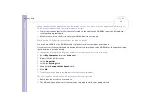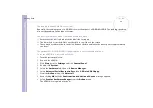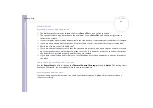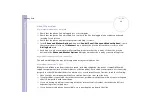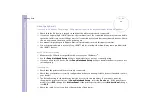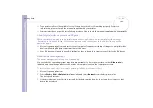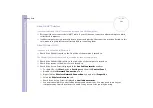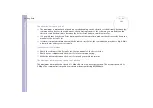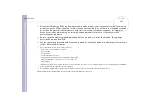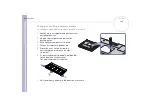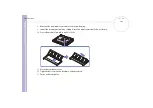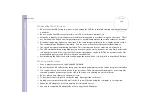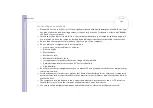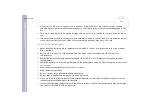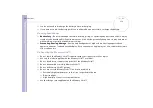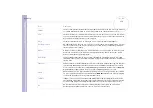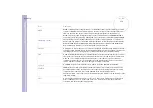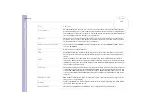
Sony Notebook
User Guide
Precautions
108
On handling the LCD screen
❑
Do not leave the LCD facing the sun as it can damage the LCD. Be careful when using the computer near
a window.
❑
Do not scratch the LCD or exert pressure on it. This could cause malfunction.
❑
Using the computer in low temperature conditions may produce a residual image on the screen. This is
not a malfunction. When the computer returns to normal temperature, the screen returns to normal.
❑
A residual image may appear on the screen if the same image is displayed for a lengthy period of time.
The residual image disappears in a while. You can use a screensaver to prevent residual images.
❑
The screen becomes warm during operation. This is normal and does not indicate a malfunction.
❑
The LCD is manufactured using high-precision technology. You may, however, see tiny black points and/
or bright points (red, blue, or green) that continuously appear on the LCD. This is a normal result of the
manufacturing process and does not indicate a malfunction.
❑
Avoid rubbing the LCD screen, as this can damage the screen. Use a soft, dry cloth to wipe the LCD screen.
On using power source
❑
Your computer operates on 100V-240V AC 50/60 Hz.
❑
Do not share the AC outlet with other power-consuming equipment, such as a photocopier or shredder.
❑
You can purchase a power strip with a surge protector. This device prevents damage to your computer
caused by sudden power surges such as those that may occur during an electrical storm.
❑
Do not place heavy objects on the power cord.
❑
To disconnect the cord, pull it out by the plug. Never pull the cord itself.
❑
Unplug your computer from the wall outlet, if you will not be using the computer for a long time.
❑
When the AC adapter is not used, unplug it from the AC outlet.
❑
Use only the supplied AC adapter. Do not use any other AC adapter.


